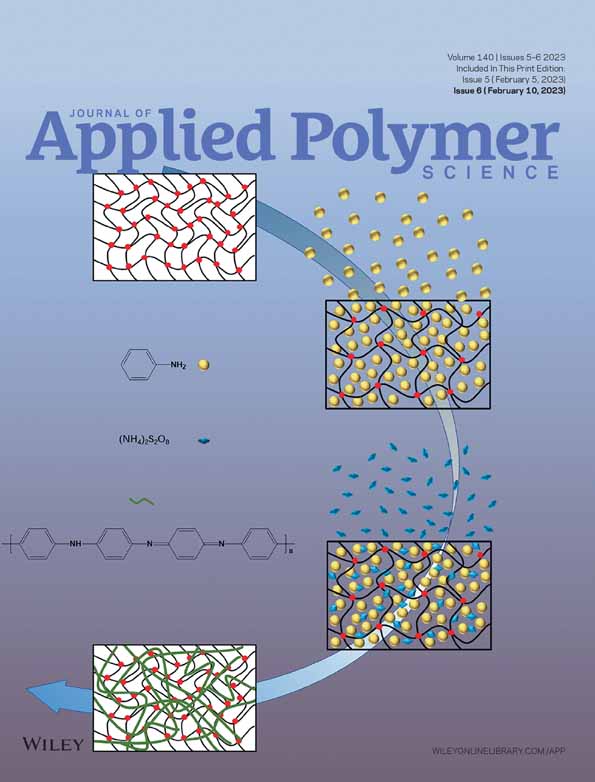Preparation of lightweight and high-strength polypropylene-based ternary conductive polymer foams by in situ microfiber reinforcement
Funding information: Beijing Natural Science Foundation, Grant/Award Number: 2222069; Fundamental Research Funds for the Central Universities, Grant/Award Numbers: XK18023, 2312017BHYC04A; National Key RD Program of China, Grant/Award Number: 2020YFB1506102; Science and Technology Major Project of Ningbo, Grant/Award Number: 2021Z044
Abstract
Conductive polymer composites (CPCs) have demonstrated significant potential in the aerospace, electronics, and communications industries. In this study, polypropylene (PP)/multiwalled carbon nanotubes (MWCNTs) binary composites and in situ fiber reinforced multicomposites made from PP/MWCNTs were fabricated by microcellular injection molding. In addition to crystallization behavior, foam morphology, mechanical properties, dielectric properties, and electromagnetic shielding properties of the composites were analyzed. According to the results, microporous structures can facilitate the distribution of conductive fillers, thereby enhancing the electromagnetic shielding performance and mechanical properties of the composite. In situ microfiber networks display a heterogeneous nucleation effect, resulting in an increase in foam density, which improves composite performance. In situ fiber-reinforced microporous multicomposites are capable of exhibiting higher elongation at break and electromagnetic shielding properties than binary systems, and the multicomposites can achieve greater electromagnetic shielding effectiveness (SE) with fewer conductive fillers. Ultimately, fiber-reinforced microporous composites with an elongation at break of 194.40%, an electromagnetic shielding effect of >20 dB, and an absorption mechanism are produced. A feasible method is presented in this study for preparing CPCs that produce light weight, excellent mechanical properties, and high electromagnetic SE at low filler levels.
Open Research
DATA AVAILABILITY STATEMENT
The data used to support the findings of this study are available from the corresponding author upon request.




